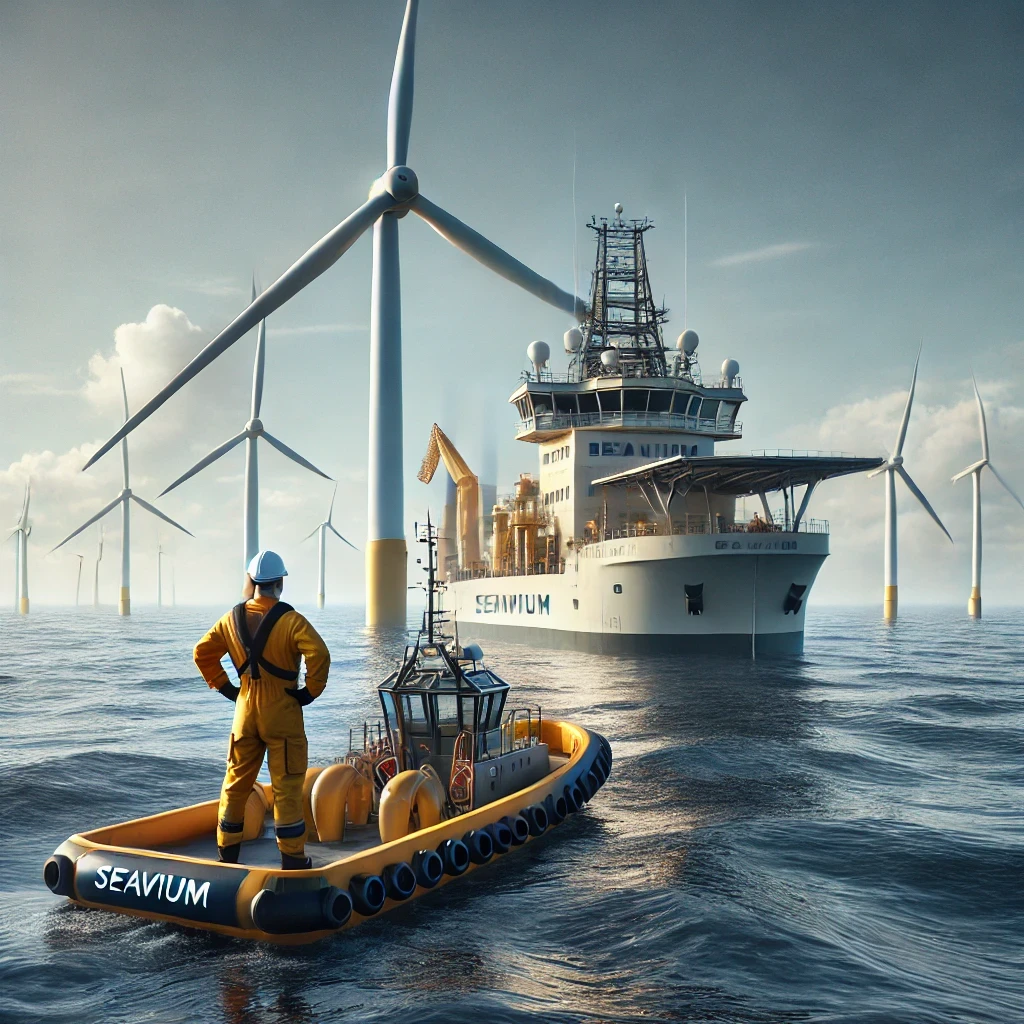The Lifecycle of an Offshore Wind Farm: From Planning to Decommissioning
Feb 8, 2025

Offshore wind farms are becoming a cornerstone of the global renewable energy transition, providing clean electricity while reducing carbon emissions. But building an offshore wind farm is a complex, multi-stage process that requires years of planning, engineering, construction, and maintenance before it eventually reaches decommissioning.
In this guide, we break down the entire lifecycle of an offshore wind farm—from the initial feasibility studies to the final decommissioning—highlighting the key challenges and technologies involved at each stage.
1. Feasibility & Site Selection 📍
Before construction begins, an offshore wind farm must undergo years of planning and feasibility studies to ensure viability. Key considerations include:
🔹 Wind Resource Assessment – Measuring wind speeds, consistency, and energy potential using LiDAR buoys and metocean studies.
🔹 Seabed Surveys – Mapping the seabed to assess soil conditions and environmental impact.
🔹 Regulatory Approvals & Permits – Securing government approvals, environmental impact assessments, and licenses.
🔹 Grid Connection Planning – Identifying how and where the generated electricity will connect to the national power grid.
🛑 Example: The Dogger Bank Wind Farm in the UK spent over 10 years in feasibility studies before construction began.
2. Design & Engineering 🏗️
Once a site is approved, the project moves into detailed engineering and design. This phase includes:
✅ Turbine Selection – Choosing between fixed-bottom or floating wind turbines based on water depth and seabed conditions.
✅ Foundation Engineering – Monopile, jacket, or floating foundation designs must be selected and tested.
✅ Electrical System Design – Planning inter-array cables, substations, and transmission lines.
✅ Logistics & Supply Chain Planning – Sourcing materials, vessels, and construction equipment.
🛑 Example: Floating wind turbines, like those used in Norway’s Hywind project, require specialized mooring systems and dynamic cables.
3. Procurement & Manufacturing ⚙️
Building an offshore wind farm requires massive industrial coordination. Key procurement steps include:
🔹 Turbine Manufacturing – Large wind turbines (up to 15 MW per unit) are produced by industry leaders like Siemens Gamesa and Vestas.
🔹 Foundation & Substation Fabrication – Offshore substations and foundations are manufactured at specialized shipyards.
🔹 Cable Production – High-voltage export cables are produced for connecting offshore wind farms to the grid.
🔹 Vessel & Port Coordination – Securing jack-up vessels, cable-lay ships, and logistics ports for installation.
🛑 Example: A single offshore wind turbine blade can be over 100 meters long, requiring specialized transport and handling.
4. Construction & Installation 🚢
Once all components are ready, installation begins at sea. This phase includes:
✅ Foundation Installation – Using specialized vessels to install monopiles, jackets, or floating anchors.
✅ Turbine Assembly – Jack-up vessels or floating cranes lift and install the turbine towers, nacelles, and blades.
✅ Cable Laying – Export cables and inter-array cables are buried beneath the seabed using cable-laying vessels.
✅ Substation Installation – Offshore substations collect and transmit electricity to the mainland grid.
🛑 Example: The Hornsea Wind Farm in the UK required over 200 wind turbines to be installed using heavy-lift vessels.
5. Commissioning & Grid Integration ⚡
Before becoming operational, an offshore wind farm must go through commissioning and testing:
📍 System Testing – Checking turbines, cables, and substations for efficiency and safety.
📍 Grid Synchronization – Connecting the wind farm to the power grid and ensuring stability.
📍 Final Inspections – Ensuring compliance with environmental and operational standards.
📍 Power Purchase Agreements (PPAs) – Contracts with energy buyers to supply renewable electricity.
🛑 Example: Germany’s Baltic 2 Wind Farm underwent six months of grid testing before full operation.
6. Operations & Maintenance (O&M) 🔧
Offshore wind farms require constant maintenance to ensure optimal performance. This includes:
🔹 Routine Inspections – Using drones and ROVs to monitor turbine conditions.
🔹 Blade & Gearbox Maintenance – Repairing wear and tear caused by harsh offshore conditions.
🔹 Underwater Inspections – Checking moorings, foundations, and subsea cables.
🔹 Crew Transfer & Logistics – Using CTVs (Crew Transfer Vessels) and SOVs (Service Operation Vessels) for technician access.
🛑 Example: The world’s first autonomous maintenance vessel, the Mayflower Autonomous Ship, is being tested for offshore wind O&M support.
7. Decommissioning & Repowering 🏗️♻️
After 25-30 years of operation, an offshore wind farm faces either decommissioning or repowering:
✅ Decommissioning: Removing turbines, recycling materials, and restoring the seabed.
✅ Repowering: Replacing older turbines with next-generation, higher-capacity models.
✅ Cable Recovery: Safely extracting buried export cables.
✅ Sustainable Recycling: Developing circular economy solutions for turbine blades and metals.
🛑 Example: Denmark’s Vindeby Offshore Wind Farm, the world’s first offshore wind farm, was decommissioned in 2017 after 25 years.
Seavium: Supporting Every Phase of Offshore Wind Operations 🌍🚢
At Seavium, we provide the specialized vessels needed for every stage of an offshore wind farm’s lifecycle, from installation to maintenance and decommissioning:
⚡ Installation Vessels – Jack-up vessels, cable-layers, and heavy-lift ships.
⚡ O&M Support – Crew Transfer Vessels (CTVs) and Service Operation Vessels (SOVs).
⚡ Decommissioning Assets – Salvage and subsea recovery vessels.
📩 Looking for the right vessel for your offshore wind project? Contact us today.
🌐 Explore our fleet: Seavium
📧 Contact us: sales@seavium.com
🔹 Offshore wind is the future—Seavium is here to power it.